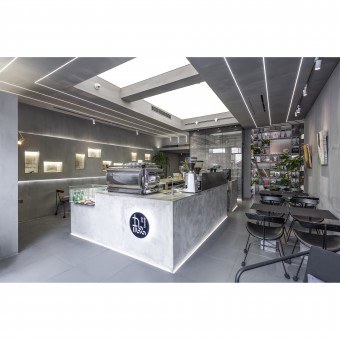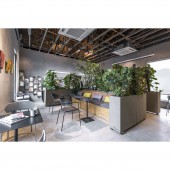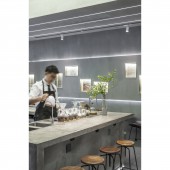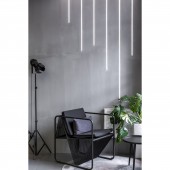DESIGN NAME:
Hutong Neighborhood Complex
PRIMARY FUNCTION:
Coffee Shop
INSPIRATION:
The project is an old house in the Hutong of the old city, near the famous Prince Gong's residence. The houses in the Hutong are very small and there is no centralized greening. Residents need a bigger living room and back garden. So the designer made the upper and lower floors into community living room and garden respectively. Add fashionable elements to the old house and inject new vitality into the life of Hutong with contrast. Through planning and transformation, different functions of different periods (such as coffee shop, shared office, art space, old people's lounge, etc.) are added to this space, so that the old house can redistribute its vitality and continue their life.
UNIQUE PROPERTIES / PROJECT DESCRIPTION:
The project is the renewal and activation of an old house, integrating the functions of coffee shop, art space, community shared living room, book corner, etc. It is Such a complex function building will increase the vitality of an old city, realize "urban micro renewal" and regain the Hutong Culture.
The 1st floor is called big living room in Hutong. The residents regard it as their own living room and the continuation of their home. The 2nd floor is called back garden in the alley. The movable plant box is used to divide the space according to the functional requirements of the space. Artists are regularly recruited to create works for the frontage art window.
OPERATION / FLOW / INTERACTION:
The project is close to the tourist area, and the multi-functional composite space is used. On weekends, Hutong visitors make full use of the space to drink coffee, read books and talk. On weekdays, due to the lack of tourists, part of the second floor becomes a shared office space. At the same time, free rest service is provided for the elderly in the community. It is also a free street art space with exhibitions of artists from Italy, Russia and China.
PROJECT DURATION AND LOCATION:
Design Time: November 2019 to December 2019
Construction Time: December 2019 to February 2020
Beijing, China
FITS BEST INTO CATEGORY:
Interior Space and Exhibition Design
|
PRODUCTION / REALIZATION TECHNOLOGY:
The walls and floors of the project are made of low-cost environmental protection materials. The color and texture are in line with the characteristics of the Hutong district. The glass is in line with the map of the Qianlong period in Beijing made of huge sulfuric acid paper to separate the space. The ultra-fine linear light belt flows to the wall along the top surface, making the eyes focus on the wall of landscape position, just like time flowing. In the gray wall of the old house, the sense of technology is compared.
SPECIFICATIONS / TECHNICAL PROPERTIES:
Use Area of Two Floors: 133 Square Meters,
First Floor Platform Area: 14.3 Square Meters,
Second Floor Terrace Area: 17 Square Meters
TAGS:
Urban Micro Renewal, Hutong Living Room, Hutong Back Garden, Art Gallery, Community Book Corner, Café shop, Shared Space
RESEARCH ABSTRACT:
PhilipM.Goldsmith, a great Canadian architect, said: "the most meaningful protection for an old building is to find a way to reuse it.". This project retains the blue brick exterior wall and wooden roof of the old building, continues the color of Beijing gray in the interior, injects coffee makers, living plants and community shared living rooms who are willing to communicate, and becomes a scarce public space in the core area of Beijing.
CHALLENGE:
1. The project is located in the old urban area, with the project as the center, the public space within 500meters is seriously lacking, and the area needs to share public space.
2. From the perspective of coffee shop operation, we must control the cost of renovation and find a balance between cost and design effect.
3. How to protect the old building structure. In the same space, avant-garde works of art coexist with the exposed old roof truss, colliding with different tastes.
ADDED DATE:
2021-03-05 13:48:57
TEAM MEMBERS (4) :
Chen Yuwei, Ping Siwei, Zheng Chenxi and Li Jing
IMAGE CREDITS:
Image #1: Photographer Liu Lei
Image #2: Photographer Liu Lei
Image #3: Photographer Liu Lei
Image #4: Photographer Liu Lei
Image #5: Photographer Liu Lei
|










